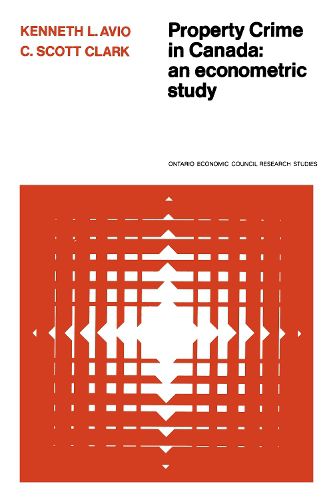Readings Newsletter
Become a Readings Member to make your shopping experience even easier.
Sign in or sign up for free!
You’re not far away from qualifying for FREE standard shipping within Australia
You’ve qualified for FREE standard shipping within Australia
The cart is loading…






This is the first attempt, using Canadian data and econometric techniques, to study property crime as rational economic behaviour. Supply-of-offences functions for five types of property crime are specified and estimated using provincial data for 1970-2. Both the probability of apprehension and the probability of conviction are shown to have a substantial negative effect upon most kinds of property crime, with the conviction rate exhibiting the stronger influence. The generally significant inverse relationship between expected sentence length and the crime rate found by other researchers does not appear for the crimes investigated here. The results also indicate that estimating supply-of-offence functions over such aggregate categories as ‘property crime’ can lead to unjustified generalizations about particular types of crime.
$9.00 standard shipping within Australia
FREE standard shipping within Australia for orders over $100.00
Express & International shipping calculated at checkout
This is the first attempt, using Canadian data and econometric techniques, to study property crime as rational economic behaviour. Supply-of-offences functions for five types of property crime are specified and estimated using provincial data for 1970-2. Both the probability of apprehension and the probability of conviction are shown to have a substantial negative effect upon most kinds of property crime, with the conviction rate exhibiting the stronger influence. The generally significant inverse relationship between expected sentence length and the crime rate found by other researchers does not appear for the crimes investigated here. The results also indicate that estimating supply-of-offence functions over such aggregate categories as ‘property crime’ can lead to unjustified generalizations about particular types of crime.